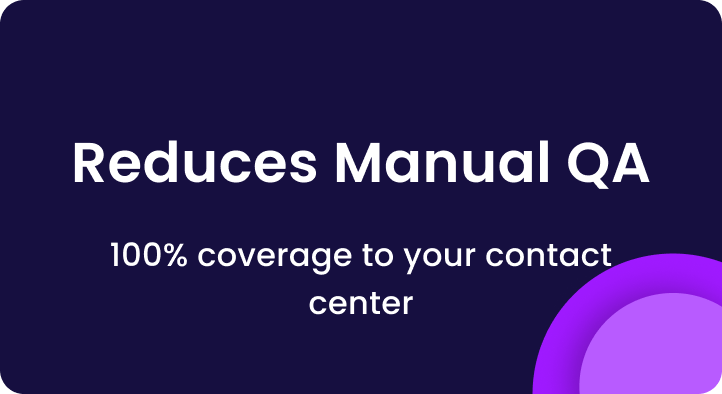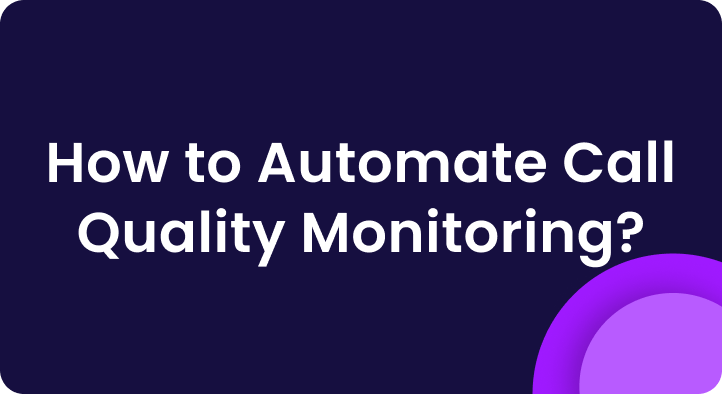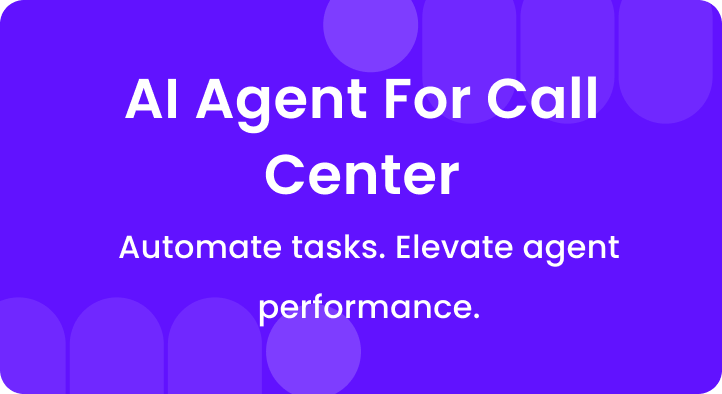In a call center, quality management is more than checking whether agents “sound polite” or “follow the script.”
It’s about making sure every interaction leaves the customer better off than before they called – and that your agents can deliver this consistently, efficiently, and compliantly.
But here’s the truth: you can’t improve what you don’t measure.
And that’s where KPIs (Key Performance Indicators) come in.
The right KPIs help you see what’s really happening on your calls, spot trends, and guide coaching efforts. The wrong ones? They just fill up dashboards without driving results.
Here’s a deep dive into the KPIs you should track for effective call center quality management – plus tips on how to use them without drowning in data.
1. QA Score
Your QA score measures how well an agent handled a call against your defined quality standards. This usually involves a scorecard with criteria like:
- Proper greeting
- Verification steps
- Script adherence
- Empathy and tone
- Resolution quality
- Closing
Why it matters:
It’s the most direct reflection of service quality from an internal perspective. It tells you whether your agents are following best practices and meeting your expectations.
Example:
- High score: The agent greeted the caller warmly, verified identity, resolved the issue without escalation, and confirmed satisfaction before ending the call.
- Low score: The agent skipped verification, used a rushed tone, and ended without confirming if the problem was solved.
How AI helps:
AI-powered QA tools can automatically score 100% of calls based on your scorecard, eliminating the bias and limited sample size of manual reviews.
2. First Call Resolution (FCR)
FCR tracks the percentage of customer issues resolved in a single call – no transfers, no follow-ups.
Why it matters:
Customers hate calling back for the same issue. High FCR means:
- Fewer repeat calls (lower cost)
- Higher customer satisfaction
- Less agent frustration
Example:
- High FCR: A customer calls about a billing issue, and the agent fixes it on the spot.
- Low FCR: The same customer calls three days later because the promised change never happened.
How to measure:
Post-call surveys (“Was your issue resolved today?”) + system checks for repeat calls on the same ticket.
3. Compliance Adherence
Compliance adherence measures whether agents follow required legal and regulatory steps, like disclosures, disclaimers, or identity verification.
Why it matters:
Skipping a compliance step isn’t just a mistake – it can mean lawsuits, fines, or regulatory trouble.
Example:
In a lending call center, an agent must:
- Verify identity
- Read a rate disclosure
- Avoid making promises outside policy
If they skip or alter any of these, it’s a compliance hit.
How AI helps:
AI can detect missing disclaimers or improper language instantly, flagging risky calls in real time.
4. Average Handle Time (AHT)
AHT measures how long an agent spends on a call, including talk time, hold time, and after-call work.
Why it matters:
Shorter calls can mean efficiency – or they can mean rushed service. Longer calls can mean thorough help, or wasted time. The sweet spot depends on your industry.
Example:
- Efficient AHT: A 6-minute call where the customer’s complex issue is resolved fully.
- Too short: A 2-minute call where the customer leaves confused and calls back later.
- Too long: A 20-minute call where the agent rambles or struggles with systems.
5. Customer Satisfaction (CSAT)
CSAT is collected directly from customers, often via post-call surveys asking something like: “How satisfied were you with your experience today?”
It’s usually scored on a 1–5 or 1–10 scale.
Why it matters:
It’s the customer’s own voice in your quality program. A perfect QA score means little if CSAT is low.
Example:
- High CSAT: The customer leaves a 10/10 rating and praises the agent’s patience.
- Low CSAT: The customer gives a 3/10, noting they felt rushed and unheard.
6. Call Compliance Error Rate
This KPI tracks how often agents make compliance or process errors during calls.
Why it matters:
It’s one of the most important indicators for risk management, especially in regulated industries like finance, insurance, or healthcare.
Example:
If your team handled 1,000 calls last month and had 20 compliance misses, your error rate is 2%.
The lower, the better.
AI advantage:
Instead of relying on random sample audits, AI can catch every error, not just the unlucky few calls that get reviewed.
7. Agent Improvement Rate
This KPI shows whether agents are actually improving over time after coaching.
Why it matters:
QA shouldn’t just be about “gotchas.” It should drive real skill growth.
Example:
An agent’s QA score averages 75% in January, then rises to 90% by March after targeted coaching. That’s a clear improvement rate.
8. Silence & Talk Ratio
This measures how much time is spent talking versus silence during a call.
Why it matters:
Long silences can signal confusion, system lag, or hesitation. Too much agent talking can mean the customer isn’t engaged.
Example:
- Balanced ratio: Agent listens more during a complaint call but speaks more during a complex explanation.
- Unbalanced: Agent dominates 90% of the call, leaving little space for the customer.
Making KPIs Work Together
Tracking each KPI separately is useful, but the real power comes from combining them.
Example scenario:
- High QA score + Low CSAT → You might be checking boxes but missing emotional connection.
- Low AHT + Low FCR → Calls are short, but customers keep coming back with the same issues.
- High Compliance Errors + High FCR → Issues get resolved, but agents are cutting legal corners.
By looking at KPIs together, you see the story behind the numbers.
Avoiding KPI Overload
Here’s the trap many managers fall into: tracking too many KPIs.
More data isn’t always better.
Focus on:
- Core KPIs that reflect your business goals (e.g., CSAT, QA Score, Compliance Adherence)
- Operational KPIs that drive efficiency (e.g., AHT, FCR)
- Growth KPIs that measure coaching success (e.g., Agent Improvement Rate)
And remember: KPIs should lead to action. If you’re tracking something but never using it to make changes, it’s just dashboard clutter.
How AI Changes the KPI Game
Before AI, many KPIs were based on small call samples or delayed reports. That meant:
- Slow feedback loops
- Partial visibility
- Missed trends
Now, AI-powered quality management systems can:
- Score and analyze every single call
- Provide real-time alerts for compliance misses
- Automatically tag calls for coaching
- Generate KPI reports instantly
This means you’re not guessing – you’re working with complete, unbiased data.
Conclusion
KPIs aren’t just numbers for a report. They’re the pulse of your call center’s quality.
The right KPIs will tell you:
- Are customers happy?
- Are agents following the process?
- Are we improving over time?
- Are we delivering value efficiently?
Track them consistently, act on what they tell you, and you’ll see stronger performance, better customer experiences, and a healthier bottom line.



